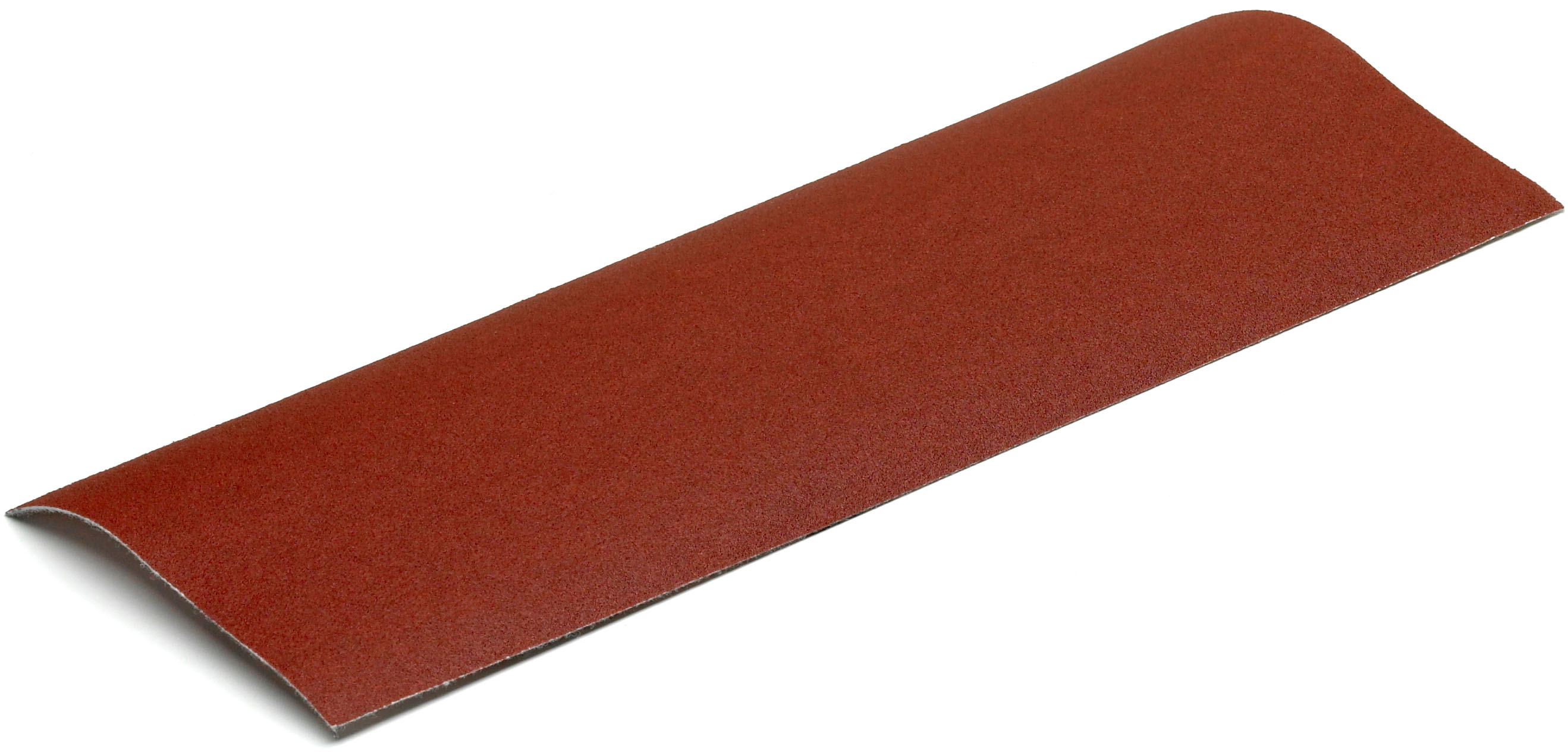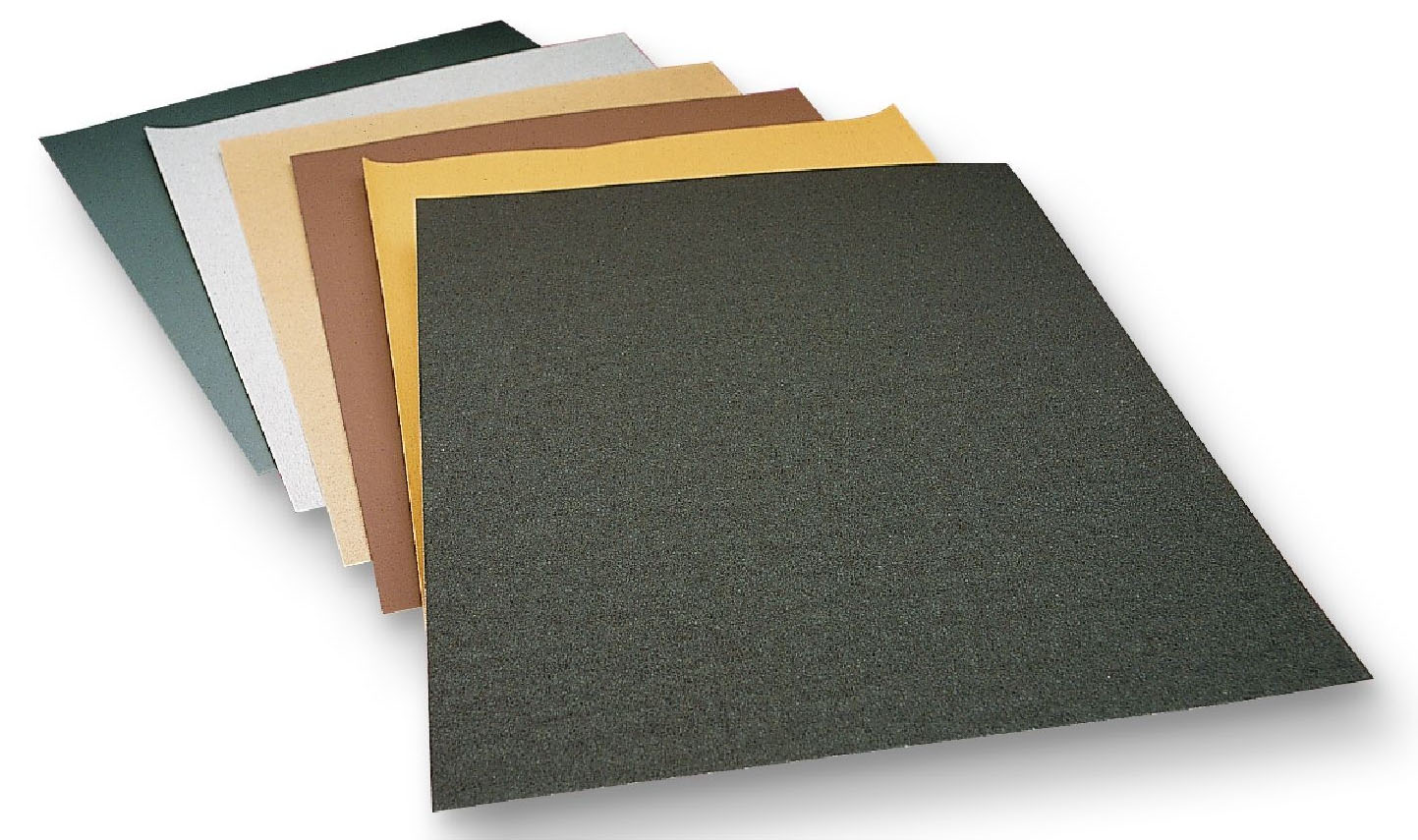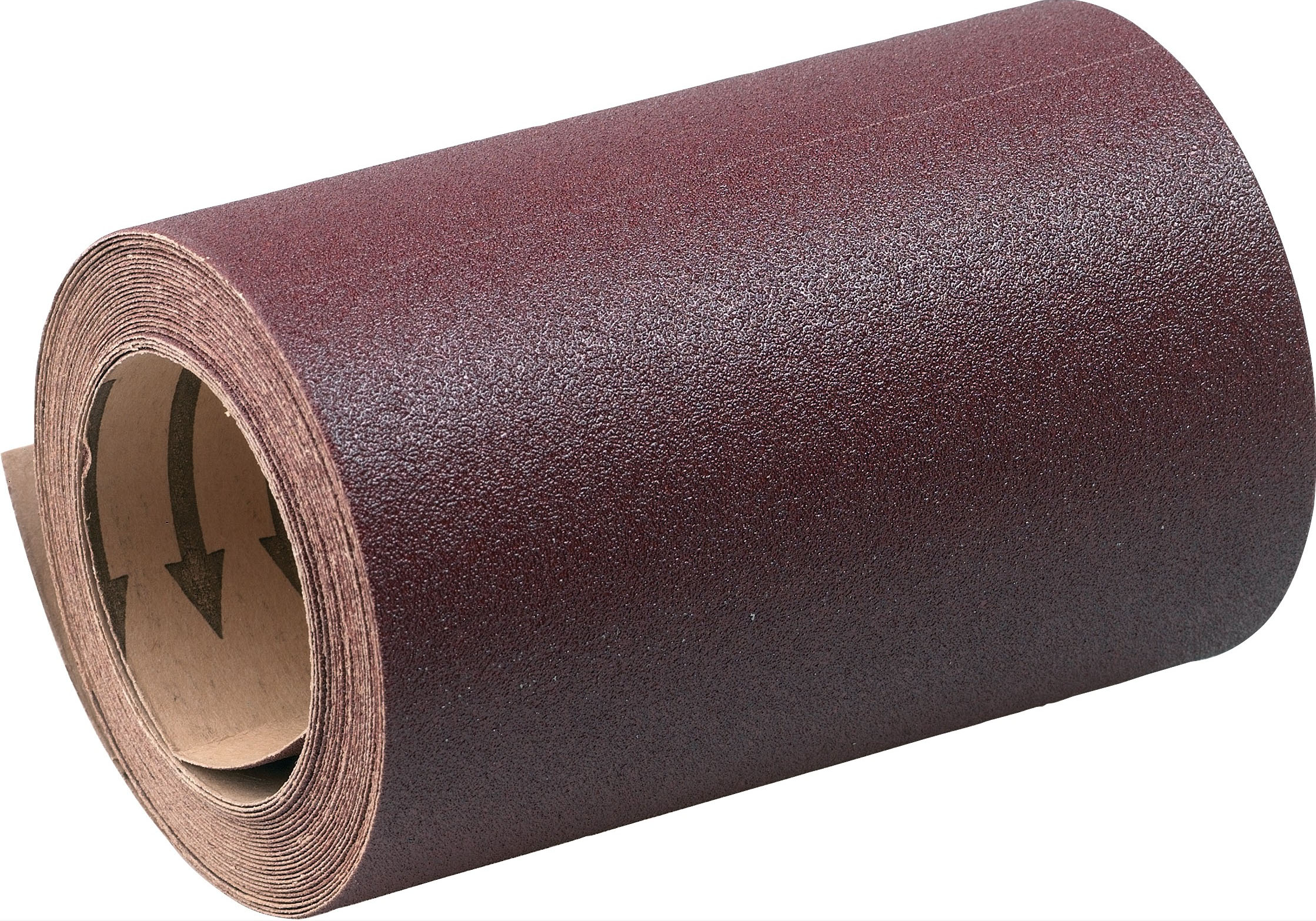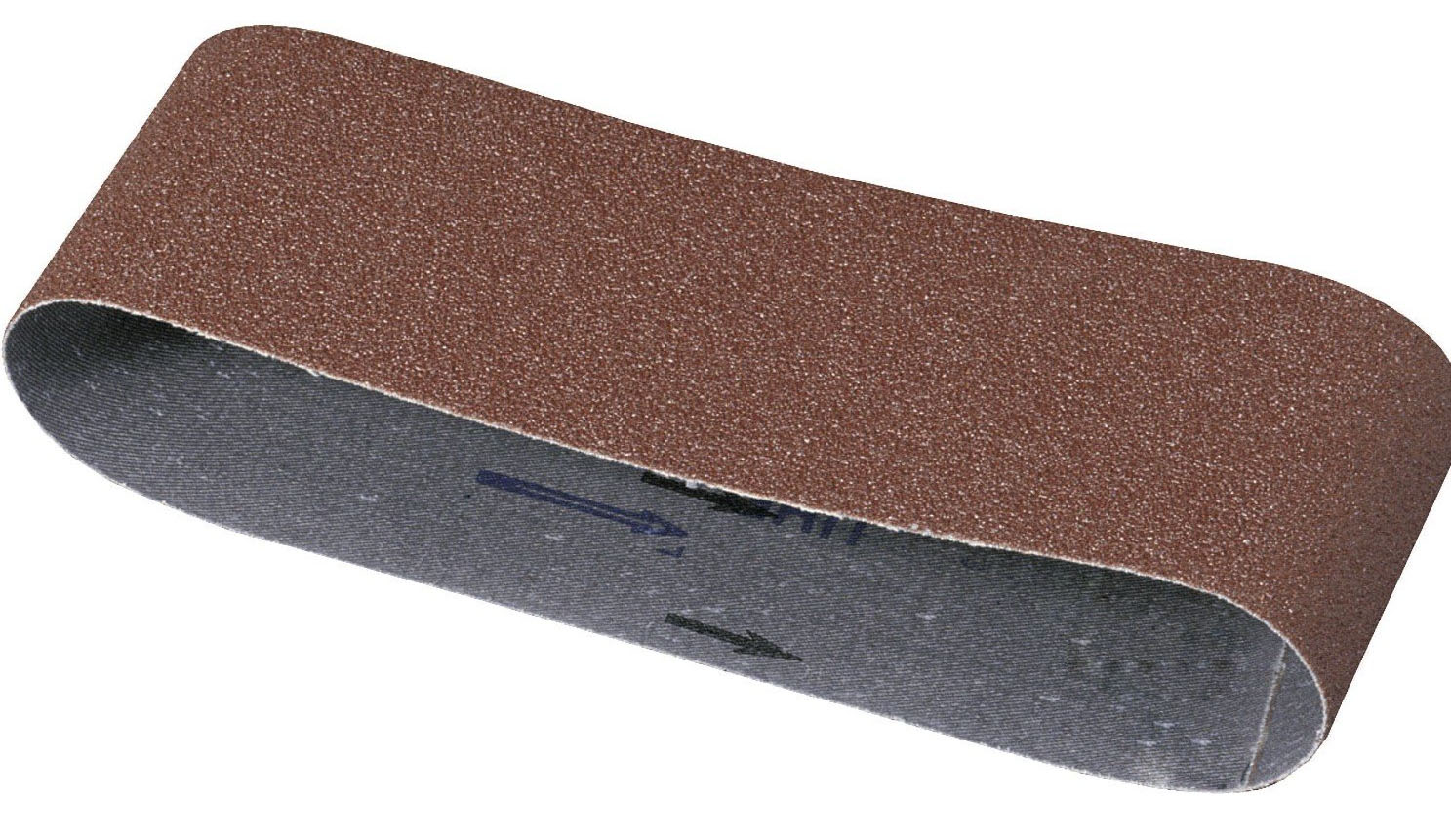November 1, 2013
Sandpaper widely used for roughing and finishing wood, metal and other surfaces. Before you buy sanding paper, you need to understand it specifications ah, the main among which are the base material, grain size, type of abrasive.
Sandpaper, or the so-called sandpaper, is a kind of tool made in the form of a paper or fabric web, on which an abrasive composition is applied using a special adhesive mixture. Sandpaper, which resembles a cutting device in principle, is designed to finish and rough work on parts and sharpen tools. On the surface of the paper there are many sharp edges that have a good effect on wood, metals and alloys, stone, and plastic.
Incorrect grit gradation will also damage the surface. Using an intermediate granulation will make it easier and much faster to get the job done right, but we'll save the sandpaper first. Water abrasive paper, which is a hard but also relatively uneven substrate for grinding grains, should be placed in a water container for about 30 minutes before sanding. Paper media that are filtered by water soften grain size differences and paper unevenness much more easily and therefore produce cracks of comparable depth.
Among the main technical characteristics of sanding papers, such as the base material, type of grain and grain index are distinguished. It is worth noting that the basis of sandpaper can be not only paper or fabric. Fiber and polyester are also used as the material for the base.
Sandpaper can be either open or closed. For processing fibrous materials such as wood or plastic, paper with open structure, where abrasive grains cover about 60% of the area. Sanding paper with a closed structure, where 100% of the area is covered with grains, is used for high-quality and precise grinding of metal surfaces.
This problem is absent in modern abrasives that are foil carriers. The surface of the film on which the grain is placed is more uniform than paper, and also greatly improves the softening of differences in grain size. abrasive material.
Grinding grain is attached to the medium using resins or special adhesives. Therefore, when preparing abrasive material for work, we always cut off excess material with sharp tools. The torn abrasive will have a very rough edge, and when grinding a surface with such an edge, it will cause deep scratches and damage. Such damage also occurs as a result of folding the paper into a so-called "cube", which destroys the grain carrier layer, thereby damaging the edge of the paper.
Elastic and durable cloth-backed sandpaper suitable for dry sanding, paint and rust removal. Sanding paper, the basis of which is made of waterproof paper, can be used in cases where cutting fluids are used.
Sandpaper grit
The main parameter of sandpaper is considered to be grit, which refers to the number of abrasive particles placed on a square centimeter of sandpaper. Rough sandpaper has a low grit. The more grains placed per unit area, the smoother the sandpaper is considered.
Sandpaper for wood
During sanding, we must pay special attention to the exact adhesion of the abrasive paper to the entire surface being processed. To achieve the highest quality, it is also important to correctly guide the pad and sander. Using the edges or single-sided pressing will cause damage in the form of uneven surface. While in mechanical devices, the wheel rotates and vibrates at the same time, and the eccentric operation prevents scratches, by hand grinding, we only need to perform movements that are parallel to each other.
Sanding paper, grit ranging from P12 to P60, is suitable for roughing and primary peeling of the surface.
Paper with grit P80-P120 can be used for medium sanding when it is necessary to smooth the surface, removing noticeable imperfections.
Sandpaper, the grit of which falls within the boundaries from P150 to P180, is quite thin. Suitable for final sanding at the final stages of wood processing.
Such a piece will allow you to quickly and accurately grind the surface. Using the abrasive dust through the holes in the paper, we must carefully match them to the suction holes in the machine. It is unacceptable to use paper with holes in other numbered or localized tools, dust collected there will damage the grinding area.
Coarse sandpaper
By following these few principles, work will be done faster and more efficiently, and the substrate prepared for varnishing will have the best quality. It is very useful to know that it is very useful to know each master. It is useful for sanding wood, removing or extinguishing paints and varnishes, and can be sanded and polished with materials other than wood. Everyone knows this, but it's worth learning more about it.
Sanding paper, the grain size of which is P220-P240, is very thin, used for grinding products before they are coated with a primer and paint.
Very fine sanding paper with grit P280-P320 is usually used to remove fine dust particles and marks.
The thinnest paper today is considered to be paper with a grain size of P360-P600. This sanding paper is used to remove gloss, stains and small scratches on the finished surface.
Abrasive paper is a thin carrier to which abrasive grains are attached. The medium is generally solid cardboard box. It can also be a cotton or synthetic non-woven material. Grains can be natural or synthetic. They are bonded to a synthetic resin binder carrier. Then get acquainted with a good sandpaper? Its synthetic abrasive grains are well bonded to the substrate and do not separate even under high mechanical loads and high temperatures.
In addition, the grain is covered with a coating that prevents dust from adhering, reducing the ability to abrade. Material - cardboard - durable and resistant to tearing. Manufacturers usually note the use or color of the abrasive paper. There are papers for wood, metal, plastics, mineral materials, as well as universal papers. High performance abrasive paper designed to work under heavy loads. You can also buy waterproof paper - for wet sanding, but it is designed to work with power tools.
Types of abrasives on sandpaper
There are four main types of abrasives:
- Aluminum oxide is brittle. Paper with this type of abrasive is more often used for wood processing. Under the influence of heat and pressure, the abrasive begins to break apart, due to which new sharp edges appear, so such sandpaper can last longer.
- Garnet is a natural abrasive suitable for sanding wood. Garnet sandpaper is relatively soft, so it is used for final sanding and polishing wood, sealing its structure. Thus pigment paints evenly penetrate into the wood.
- Silicon carbide stands out for its strength. Paper with this type of abrasive is used for grinding metals, paint, fiberglass, plastics.
- Ceramic abrasive, more often in the form of sanding belts, is considered the hardest, therefore it is usually available in coarse grades of sandpaper designed for shaping and leveling wood.
Some features of the use of sandpaper
During surface treatment with sandpaper, one must adhere to one important rule: work begins with the use of the coarsest sanding paper with a gradual transition to paper with a greater grit. Coarse grain is taken for rough sanding of wood, removal of rust and outdated paint from metal surfaces. Fine grain is used at the stages of fine grinding, polishing of painted surfaces, grinding of metals. For plastic better fit paper, where silicon carbide is applied as an abrasive.
Information about its granularity, that is, gradation, is printed on paper. The larger the number, the smaller the grain. This paper is suitable for more precise work. Stores also stock long paper rolls. Cut off the amount you need and pay for each meter.
You can also choose between hard paper and flexible paper. Flexibility will be useful when, for example, a wood block is to be applied before sanding. Oscillating grinding machines have a leg that moves forward and backward. Sandpaper is attached to it. The legs are mostly from the bottom of the Velcro. Therefore, you will need abrasive paper with nonwoven fabric or velor bottom. It is bought in rectangular sheets of the same size as the size of the foot. When your foot has a dust collection system, you need to buy paper with holes in the right places.
When wet grinding, the surface is smoother, it is possible to avoid the appearance of dust. There is a special waterproof paper for this.
Other articles
7 September
Almost every modern car is equipped with active safety systems, including anti-lock braking system. The main sensitive element of these systems is a speed sensor or an ABS sensor - read the article about these sensors, their types and design, as well as selection and replacement. Because it must be a document offered by the crusher manufacturer or compatible with their power tool, often the perforation becomes itself. Sanders have a special foot foot kit for making these holes in the paper attached to the cutter. Delta oscillating sanders require triangular abrasive paper. These grinders also have Velcro. But this is a round shape, so you need sandpaper in the form of discs, with a non-woven fabric on the bottom. Of course, the same diameter as the diameter of the foot. As with vibratory grinders, when the crusher has a dust collection system, perforated discs are required.
August 31
Modern vehicles are equipped with a light signaling system that warns other road users about braking. The basis of the alarm is the brake light switch. Everything about this device existing types, designs, as well as about the choice and replacement - read the article. For belt grinders. As the name suggests, this is a rim-shaped strip that is considered to be a crusher roll. Belt size is adjustable to crusher model. Some of the surface smoothing work can be done on your own. However, it is important to know the abrasives available, their type and purpose, and the tools they require. Choosing the right material will prevent us from damaging the polished surface. Before choosing the right abrasive, we need to know what kind of surface we want to work on. Soft surfaces should be ground with hard grinding wheels and hard materials with soft grinding wheels. Rigid grinding wheels are used for profile grinding, coarse grinding and coolant grinding. Soft grinding wheels are used for grinding workpieces where higher heat dissipation and grinding large surfaces, discontinuous surfaces are not allowed. Another parameter to look for is the grain type. Sandblasters of various types are widely used in construction, various industries, in auto repair and other areas. Everything about this equipment, its classification, design and characteristics, as well as the correct choice and operation of devices - read in the article.Features of the use of sandpaper
August 10
Despite the spread of welding, the classic technology of joining parts with rivets is still relevant. About the main element of this connection - rivets, their types, design, characteristics and installation methods, as well as their selection and use - read in this article. The most common is electrocorrosion used for processing wood, steel and non-ferrous metals. Materials such as glass, stone, plastics or varnish should be blasted with silicon carbide abrasive. Natural: - diamond - emery - corundum - quartz - flint Artificial: - electroluminum - silicon carbide - artificial diamond - ordinary borazon - boron carbide. Distribution of abrasives by origin
Abrasives can be
Files, abrasive segments, papers, abrasive cloths and granules, abrasive pastes. Various types of binders are used to manufacture abrasives, which permanently bind the abrasive grains to a backing material of appropriate weight and elasticity.
August 3rd
To perform many works, it is necessary to ensure increased visibility of people in the daytime and at night - this is achieved by using signal vests. About what a signal vest is, what design it has and what requirements it must meet, as well as its choice - read in the article. In the case of manual processing, it is sufficient to use materials with adhesive bonding, while in the case of machining should be used best materials such as synthetic resins. Ceramics, silicate, magnesia, bakelite, rubber, shellac, abrasive powders. . Abrasive materials can be used for manual processing or power tools: drills or grinders. All are marked with a number that determines the thickness of the grain. The higher the number, the finer the grain. Wipe the wall with abrasive paper attached to a float to prepare the surface for the new wallpaper. Having chosen the grain size, it is necessary to take into account the type of processing that we will perform and the smoothness of the surface that we want to achieve. Various granulates are often used for processing, starting with larger grains followed by higher granulation, until the desired effect is achieved. Careful selection of materials must be made, as bypassing more than one granulate can cause problems with the removal of granules after lower granulation.Types of binders and their marking
What is gradation
Sandpaper, sponge or bar - the most popular types Supplies in a car workshop. Grinding skin is used at all stages repair work for cleaning, grinding and polishing the surfaces of various car parts: glass, metal and plastic.
Grinding skin is used for manual and machine abrasive processing of various materials.
Waterproof paper - for polishing wet metal; has a very fine grain; canvas - for wood and metal, more durable than paper sheets; Abrasive paper in rolls - different widths, sold by the meter, can be on paper or on canvas. It may also have a so-called Velcro at the bottom; Abrasive paper in sheets - widely used for manual and manual processing. Abrasive products in this group are designed for dry and wet grinding; Oscillating sanding paper - with characteristic iron or triangle shape, with Velcro fastening, suitable for polishing hard-to-reach places. Endless belt - grinders, especially suitable for grinding large surfaces, greatly speed up and facilitate the work; each belt can be adjusted to the desired belt size; Abrasive paper discs on turnips - for drills and eccentric grinders. More expensive are, as a rule, with holes for dust removal; fan disks - for metal polishing; they apply to angle grinders; Wedge discs - used for polishing metal. They are attached to a drill or angle grinder; fiber pulleys - products with a distinctive cut in the middle. They are superimposed on a disc attached to the drill; abrasive pads; abrasive sponges. Accessory: abrasive pad - can be used instead of a spatula; paper and abrasive paper mulch - paper of the desired size or mesh, rolled into a spatula and secured in handles; Drill shields - you can attach them to a sheet with Velcro. They can be regular or articulated. different types intended primarily for sale - sanding paper for sale: - for wood, - for metal, - for varnishes and plastics, - for mineral materials - universal.
Varieties of sanding paper
On the different stages auto repair shops require certain types of sandpaper. Knowing the classification of sandpaper by grain size, backing material, type of abrasive and the nature of its filling helps to choose the right sample for a specific stage of work. Sandpaper is marked with reverse side, but the alphanumeric designations used may differ, as they sometimes belong to the standards systems of different countries.
According to the form, the manufactured abrasive products can be sheet (letter designation L) or rolled (without letters).
The number "1" in the marking indicates that the skin is suitable for materials - wood, plastic, and "2" suggests the possibility of using paper for processing solids - glass, metals.
Grain sanding paper in modern Russian GOST is denoted numerical values with the letter "P": the larger the size of the particles, the less they fit per unit area, respectively, the smaller the number of the grinding material. Depending on the size of the abrasive particles, the following types of sandpaper grit are distinguished:
- coarse-grained (macrogrid): numbers Р22–Р220;
- fine-grained (microgrid): Р240–Р2500.

Skin on a fabric basis in combination with paper or cardboard
Materials with a finer abrasive (up to 4000) are used not for grinding, but for polishing the paintwork. In practice, it is more convenient to divide the grinding material into three types: coarse, medium and fine-grained. Coarse-grained sandpaper (P22 - P80) is used for rough cleaning on early stages work, leaves behind gross risks that need to be rubbed with a finer abrasive. Medium grain (P90-P220) is used for intermediate processing, it also leaves behind risks. Fine-grained (P240-P2500) cleans the surface to a matt state without scratches, used for finishing and polishing.
An equally important parameter for choosing an abrasive in an automaker is the backing material. The car surface grinding technology provides for two types of parts processing - “wet” and “dry”. If the base of the sanding belt is made of a fragile material, then it simply will not stand the test of water. Varieties of sandpaper according to the material of the substrate for the grain are as follows:
- sandpaper on a paper basis;
- sandpaper on a fabric basis;
- two-layer sandpaper (cloth plus paper).

Multi-colored sandpaper in sheets
Paper-based sandpaper is the cheapest and most affordable option. It is quite suitable for work on a dry surface, and if high-quality cardboard was used for production, then the product has mechanical strength. If you bend the sandpaper in half, it should not break at the fold - this simple test helps determine the quality of the product when buying. Sometimes paper base can be impregnated with waterproof compounds.
Moisture resistant sandpaper is available on tissue(polyester or cotton) backing. It is impregnated with water-repellent resins, it can be wetted with water, the backing is elastic, durable and wear-resistant.
The combined base is paper or cardboard glued to the fabric. The possibility of dense application of small particles on cardboard is combined with high strength and elasticity of the fabric base. This is the most expensive type of abrasive, since the density sandpaper high.
Features of the use of sandpaper
Knowing the patterns of the grinding process helps to choose sandpaper for a particular type of work. Grinding the surface of the car is carried out in stages various types sandpaper: starts with coarse abrasive materials, gradually moving to fine abrasive.

Used for abrasive processing of metals, alloys, wood and other materials
When moving from one sandpaper number to another, the “rule of 100” is applied: the gradation of the next number is increased by no more than 100 units. For example, immediately after grinding with P120 abrasive, you can use P220 sandpaper, but not P240 and higher.
Advice. In a set of consumables for a motorist, there should be various tools and tools. Right choice sandpaper for a particular stage will provide a decent level of quality work in the subsequent stages of repair.
The grit size of sandpaper for wet sanding should be P400-P800 (inclusive). To work with water, a cloth-based sandpaper is used. The use of water during grinding contributes to a gentle effect on the surface and ensures the absence of dust.
Sanding paper has a shelf life of 2 years, after which the base becomes brittle and the abrasive crumbles. You can determine whether the skin is suitable for grinding using a simple test - expired products break at the fold, and strong products remain intact. The skin on a fabric basis is torn to check - a strong substrate will emit a characteristic crack.

Abrasive paper for special machine
Sandpaper is more often used for, but for convenience and speed up the process, various grinding devices are used: a bar, special graters, planes. You can make devices yourself from wood or rubber, securing the skin with clamps. Apparatus for grinding and polishing are usually equipped with special abrasive wheels: in the grinder they use sandpaper P80-P240, in the polishing device - P600-P4000.
Classification of sandpaper according to the type of grinding grain
Sanding paper differs in the chemical composition of the abrasive. More often, the substrate is coated with aluminum oxide (hard crystals) or silicon carbide (the fragile grains of which break during operation, forming new cutting edges). Processing of soft wood is carried out with sandpaper coated with aluminum oxide. Working with hard materials: metal, glass, plastic - involves the use of sanding paper coated with silicon carbide.
The filling of the abrasive on the surface is made continuous or partial. According to the degree of filling of the base with grain, types of sandpaper are open (abrasive occupies 40–60% of the surface) and closed (solid filling). Soft surfaces are processed open, the advantages of this type are that the gaps between the grains are not clogged with waste from the grinding process. Skins with continuous abrasive dressing are used for grinding hard materials; for all their advantages, they quickly “salt”.
WATCH THE VIDEO INSTRUCTIONS
The quality of grinding skins is also determined by the binder composition (resins, glue or varnish) that connects the grain into a single whole. The elasticity and water resistance of the material depends on it. Sometimes antistatic and anti-loading agents are added to the binder.
Grinding with a properly selected type of abrasive material will ensure the quality of surface treatment, help to avoid rework, unjustified expenditure of effort and money.











How to cook ham in the oven at home
Pain in the lower abdomen during pregnancy, reasons for what to do Can the lower abdomen hurt if pregnant
Protein for muscle gain
The best vitamins for men according to customer reviews
How to lose weight on a vegan diet?